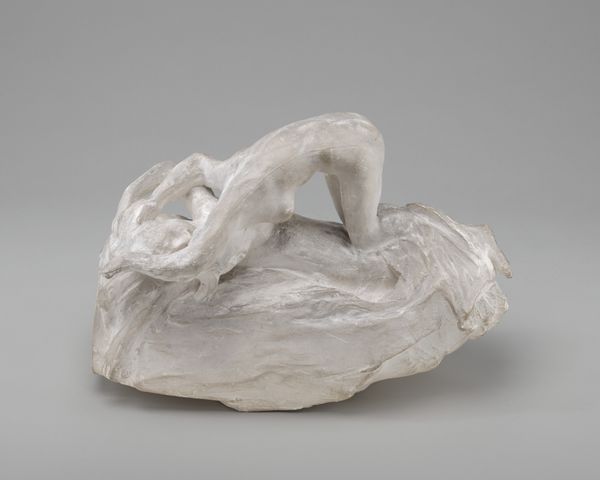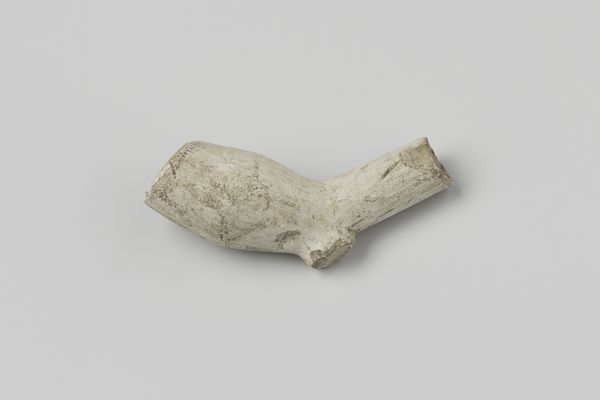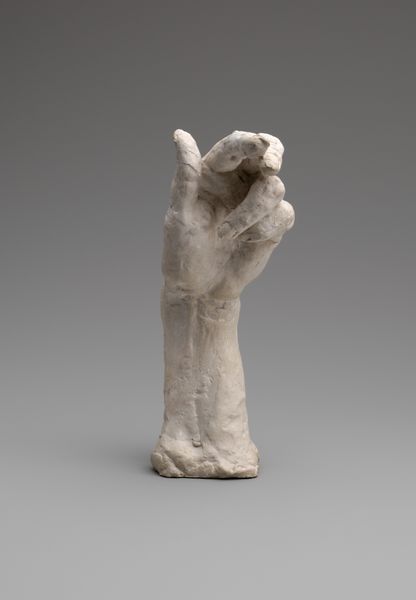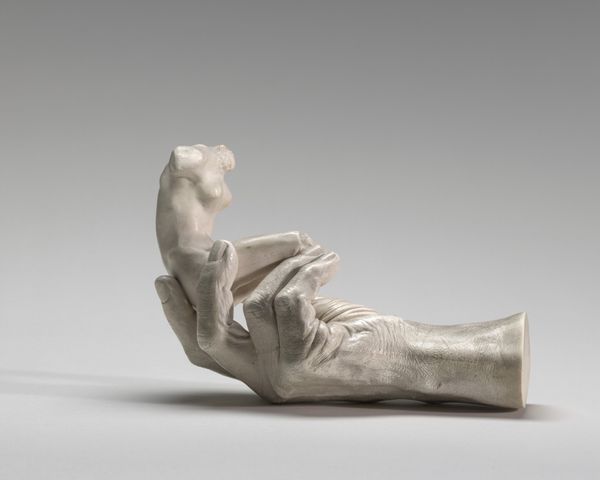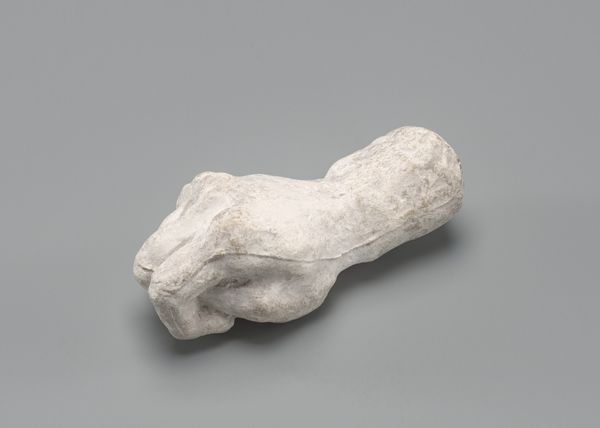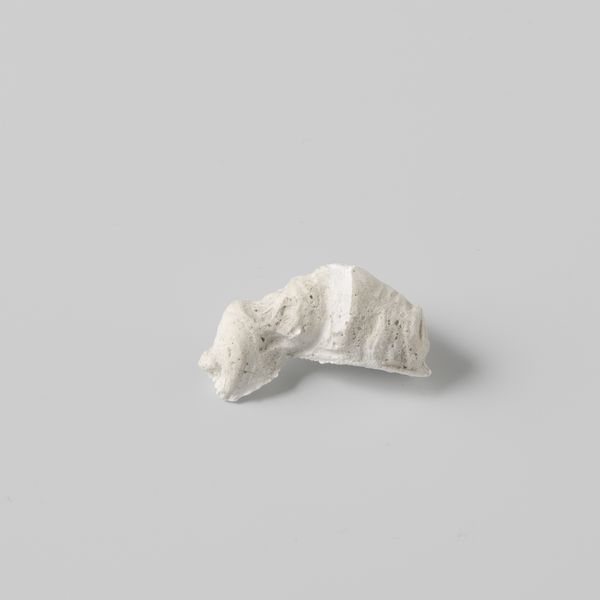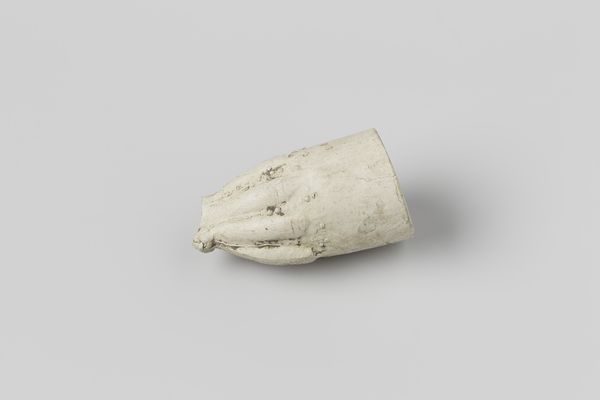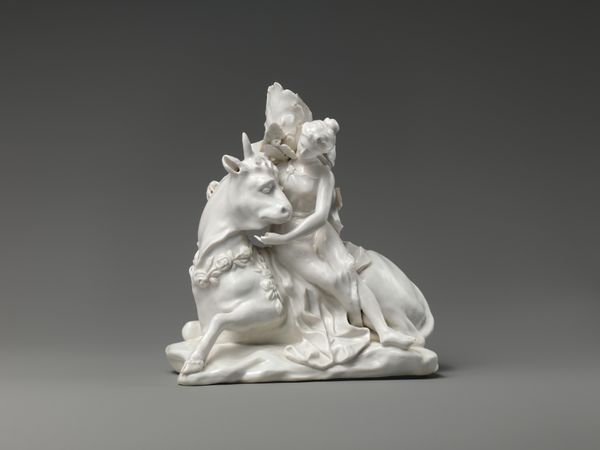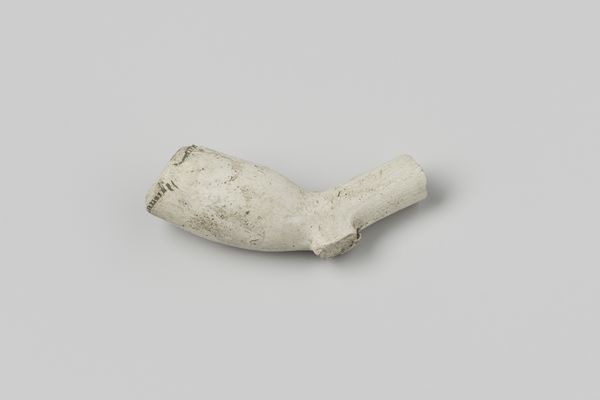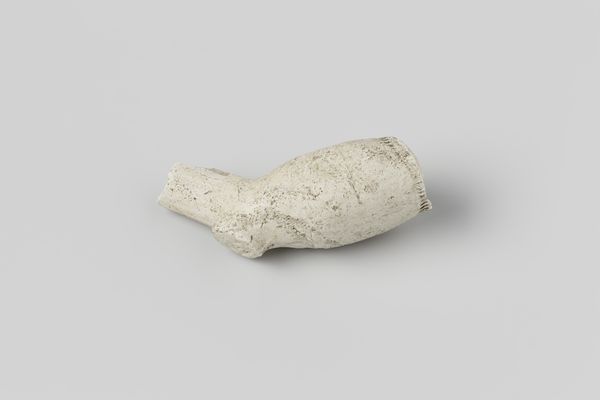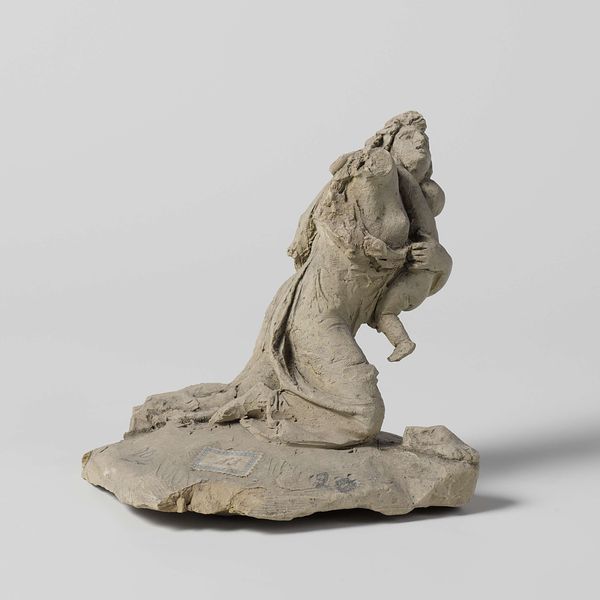
sculpture, plaster
#
classical-realism
#
figuration
#
sculpture
#
plaster
#
history-painting
#
academic-art
Dimensions: height 17 cm, width 22 cm, depth 18 cm
Copyright: Rijks Museum: Open Domain
Editor: Here we have Frans Stracké's plaster sculpture "Fragment van de Oranjeboom," created in 1874. It feels incomplete, like a piece of a grander, now-lost puzzle. What do you make of its fractured nature? Curator: The materiality of the plaster itself speaks volumes. Consider its inherent fragility. This 'fragment' isn't just a visual detail; it reflects the precarious nature of historical memory, particularly regarding symbols like the Oranjeboom—a loaded Dutch symbol of national identity. What were the social conditions that led Stracké to produce such a monument at this particular time and from this particular medium? Editor: So, it's not just about what's depicted, but also about the *stuff* it's made of, and how that reflects its cultural context. Curator: Precisely. Think about the labor involved. Who mixed the plaster? Who cast it? What was the division of labor in Stracké's studio? Plaster, often viewed as a cheap imitation of marble, questions the boundaries between 'high art' and industrial production in the late 19th century. Did this intended to be the final piece, or only part of a more elaborate monument in a more precious material? What does this signify in its original social context? Editor: It makes you wonder about the accessibility of art, too. Was plaster meant to democratize access to symbolic sculptures? Curator: A good point. And consider its current display in the Rijksmuseum. It's a remnant, an artifact, speaking to how national narratives are constructed, fragmented, and re-presented through material culture. Its fractured state encourages to question historical grandeur rather than passively accept it. What do we consume when we consume the cultural symbolism embedded within it? Editor: That really makes me see the piece differently. It's not just a sculpture of something, but a statement *about* something, about history itself. Curator: Exactly. And the material provides insight into how and why. Looking closer at how material meets cultural and social circumstances really provides so much depth.
Comments
No comments
Be the first to comment and join the conversation on the ultimate creative platform.
